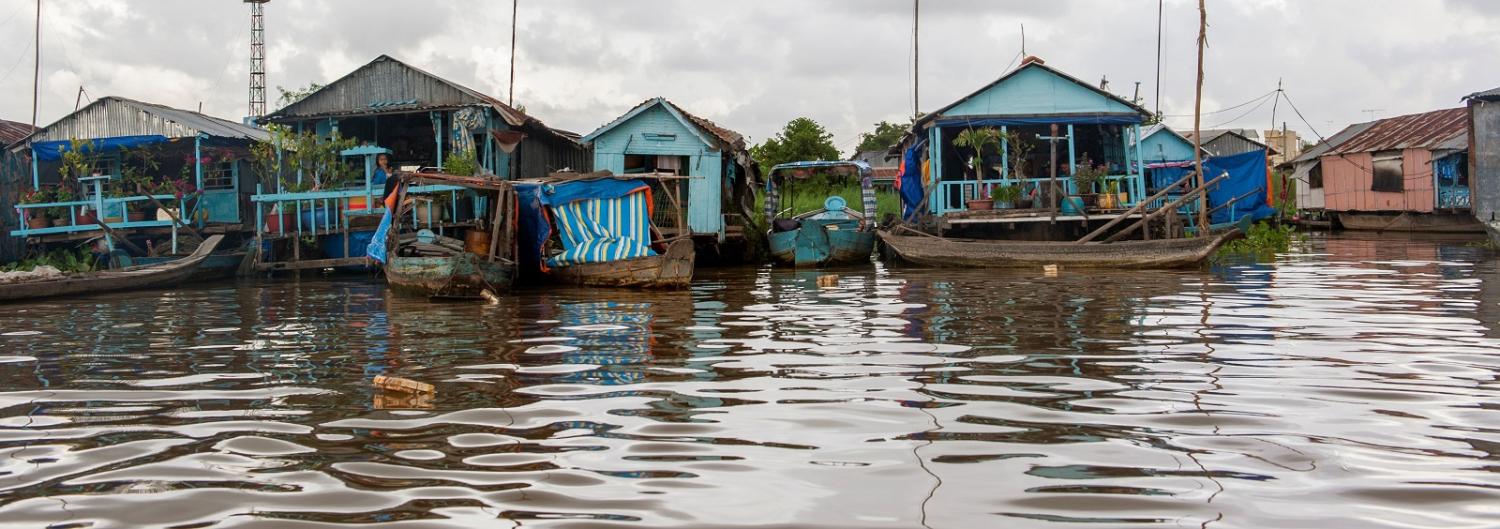A few days after Donald Trump's stunning election victory, a potentially bigger story broke for the millions who depend on the Mekong river for their food and livelihood: Laos informed the Mekong River Commission that it intends to proceed with a new hydro dam in the Pak Beng district, its third such project. This is a big deal not just for Laos, but also for its neighbours. The Mekong flows through six nations; Vietnam, the last country downstream, is especially vulnerable.
These enormous hydro dams are important for Laos. The only landlocked counry in Southeast Asia is trying to style itself as both 'land-linked' (providing a transit point for goods travelling through the region), and as the battery that powers Asia. It hopes to sell most of the cheap electricity it generates to surrounding nations. So far, most of the power (90%) generated this way has gone to Thailand, with the remainder powering the local grid.
Such development might be good for Laos, one of the poorest and smallest nations in the region. However, the flow-on effects are massive. The livelihoods of up to 60 million people in Vietnam and Cambodia could be affected, if the impact of the Pak Beng project is considered alongside other proposed dams.
'The Vietnamese have recognised there’s not much they can do to turn around the Lao,' the retired US diplomat David Brown said to Geraldine Doogue on Radio National this Saturday. So far Vietnam's protestations and talks have fallen on polite but deaf ears. Back in 2011, Vietnam's protests led to a brief halt on work on the $US3.4 billion Xayaburi dam, but construction ultimately went ahead. Vietnam's call for a 10-year moratorium on such projects was also unsuccessful.
The stakes are high. The Mekong Delta flood plains stretch across 13 provinces in Vietnam and are home to tens of millions (it is one of the most densely populated areas of the country, outside the cities). Altered river flows could impact food security, one of the great worries and existential threats faced by Vietnam's government for decades.
As Vietnam's population boomed during the 1970s and 1980s, concerns over food security prompted the engineering of the 'rice bowl' Delta to grow multiple rice crops a year (the current averge is between two and three). Rice is an easily saleable commodity that did not require technical know-how the poor and recently war-ravaged nation didn't already have. These crops not only helped feed the nation, but also helped Vietnam get hold of hard currency. Through the early 2000s Vietnam was the world’s second-largest rice exporter after Thailand.
Rising sea levels and saltwater intrusion are making coastal parts of the Delta less rice-friendly; however the dams in Laos and China (where there are seven) have also altered the flow and tides of the river, reducing the amount of nutrient-rich sediment making it down the river. Fish stocks too are reduced.
Hydropower, an obvious choice for monsoonal nations used to moving water, is common across much of Southeast Asia, including Vietnam. Vietnam’s own hydro dams are also contentious. They can be dangerous in storm and flood seasons and some environmentalists view them as damaging, but they produce less damaging emissions than coal-powered generation (an alternative that is back on the table in Vietnam, now it has ditched plans for nuclear power stations).
In the ranks of Vietnam's increasingly ambitious diplomatic efforts, Vietnam and Laos have what is described as a 'traditional friendship'. Don’t let the soft title fool you. Vietnam sees Laos as strategically important, as the two share a border with each other and with China. Vietnam is a big investor and there have been quiet struggles between Vietnam and China in Laos, and speculation as to which Politburo members are pro-Vietnam and which are pro-China. In the end, however, Vietnam cannot compete with Laos’s own interests, nor with the Chinese and Thai money flowing to Laos to turn planned projects into reality. This could be why there has been scant mention of the Pak Beng dam in the Vietnamese papers, while Xayaburi consumed so much newsprint.
Vietnam's General Secretary Nguyen Phu Trong is due to arrive in Laos today for a two-day visit and there is plenty in the papers on investment, cooperation, visits and bilateral and multilateral cooperation among Laos and Vietnam and other Mekong countries. That cooperation extends to the four-member Mekong River Commission (Myanmar may later become its fifth member), which is is more advisory than regulatory. Though Laos has submitted its plans for its third dam for review, the Commission is not really a regulatory body as it can’t enforce anything. Its head Pham Tuan Phan said recently 'the MRC is imperfect but it’s indispensable'. He added it was a 'platform for water diplomacy'.
There is going to be increasing need for such diplomacy as the Mekong nations balance growing populations and their demand for food and power along with industrialisation and the pollution and problems rapid development brings.
Photo by Leisa Tyler/LightRocket via Getty Images

